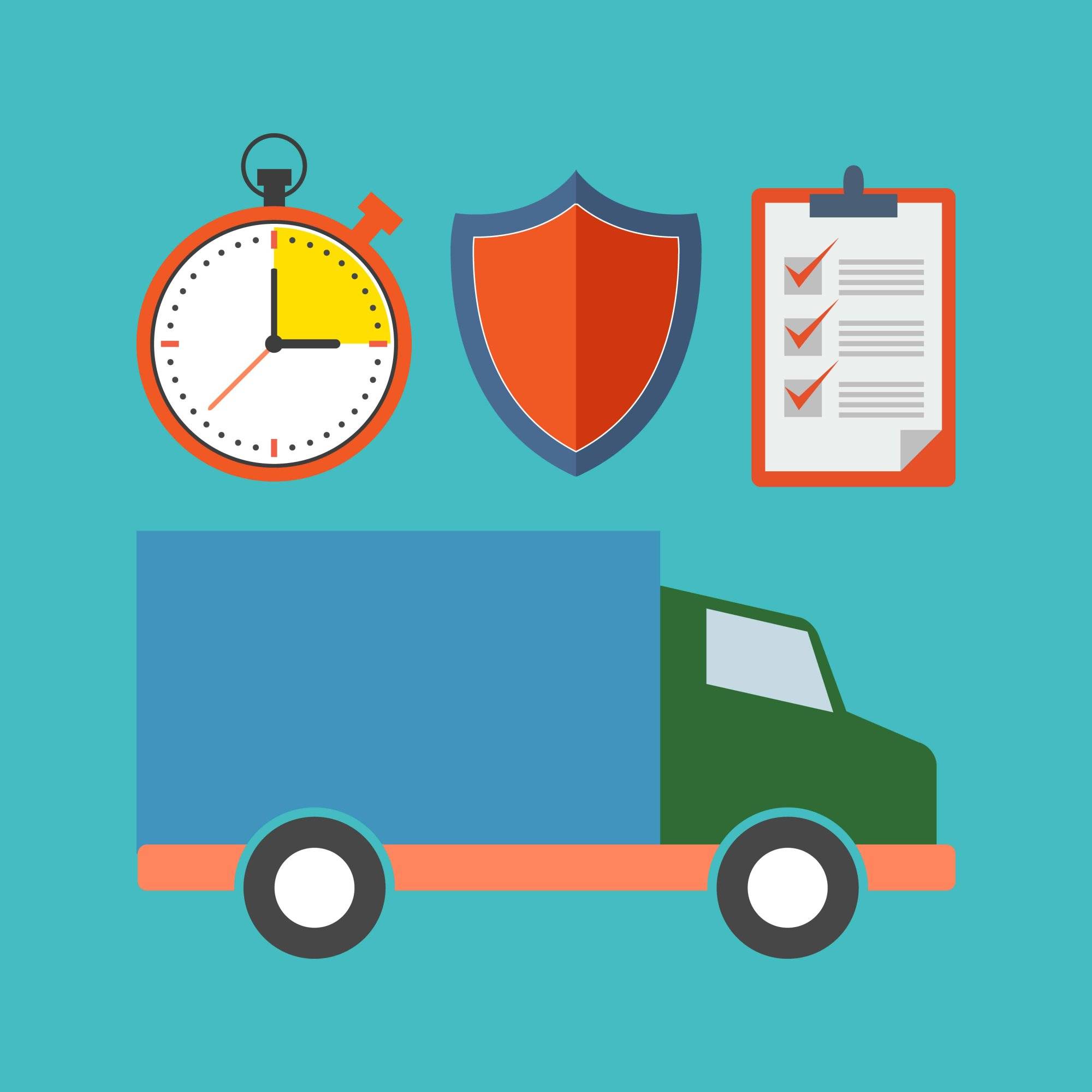How to Start a Business in Canada
Are you thinking about quitting your 9-5? Starting a business of your own can sound quite appealing. You get to be your own boss, set your own schedule, grow and develop your unique idea, and so much more.
While it will probably be one of the most rewarding, challenging, and sometimes frustrating thing you’ll ever do, starting a business is a huge commitment. Starting a business is tough, but thousands do it. We want to help you start your business the right way.
To keep everything as simple as possible, follow a step-by-step process:
- Choose the kind of business you want to start
- Start researching the market you’re trying to get into
- Get feedback on your product or service
- Come up with a good and available business name
- Register your new business
- Create a business plan
- Rent or buy a base of operations
- If exporting internationally, take extra steps to plan how you will do so
- Open a business bank account
- Handle your accounting
- Look into your financing options

4 Elements of a Successful Business
Element #1: Your Customers
Above all, your customers is the most important – know who they are and what problem you’re solving for them. Go as narrow as you can and not broad. Don’t try to help “all males who wear jeans”. Instead, be specific and go for male millennials who are looking for comfortable and fashionable jeans.
The customer experience is more relevant to the success of small businesses now more than ever. Customers don’t just want to show up and buy a product, they want to build a relationship.
Element #2: Marketing
Understanding marketing (you can do a lot through social media, websites and blogging), paid advertising and sales is important because this is how you will get new customers and grow your revenue.
Element #3: Finances
Understanding finances and managing your cash flow is essential–are your products priced properly? Are you making enough profit on them?
Element #4: Your overall operations
Who are you hiring? What’s the legal structure of your business? Who is doing your taxes and accounting?
Having walked this road several times before, I know it can be overwhelming to get your business off the ground. But I want to set you up for success! Before you throw in the towel on your day job, the sections below explain the key steps you’ll need to take in order to get your business off the ground.
Step 1: Decide What You Want to Do
Brainstorm – Is it a Passion, a Hobby, or a Business?
You know you want to start your own business, but what exactly do you want to do and why do you want to start this business? Now is a good time to break out the white board and start brainstorming. Start writing down ideas. If you already have an idea in mind for your business, start there. If you’re not sure where to start, begin with things you’re good at and that you know and like. Once you’ve laid it all out there, start going down your list and crossing things off that you know probably wouldn’t be a good fit.
For Example:
Maybe you love pastries, but you’re terrible at baking – probably not the best area for you to start a business in. Ideally, you should land on something that you’re both skilled at and passionate about.
Take Claudia Mutch, a former HR professional from New Brunswick. Claudia started her own business in 2007 to help workers looking for jobs in areas of Canada experiencing labor shortages. She started CHM Management Group, a unique Human Resources service offering career transition services, job search advice, construction safety courses, drug and alcohol testing, recruiting and more. Claudia loves what she does to help others find their purpose. She told the Canada Business Network that she advises aspiring entrepreneurs to…
“Know who you are, what makes you tick and find ways to incorporate that passion into your business. You should also love to solve problems – they may lead you to an “aha” moment that could move your business in a new and different direction.”
Strawberry Blonde Bakery is another excellent example of of pairing passion and purpose. Founders Claire Tomchishen and Jacqui Okum, both vegans, noticed a lack of options for quality vegan sweet treats in Ottawa, Ontario. So, in 2008, the pair decided to open a bakery that catered to those who suffered from food allergies or had alternative diets. Claire and Jacqui took the leap into business together “because they both had a dream of opening a bakery in this market, and loved each other’s baking, so instead of becoming competitors, they became partners. With similar ethics, and shared interests, Claire and Jacqui knew that they were setting themselves up for a successful partnership.” – Canada Business Network
Market Research
Once you’ve decided on an idea for your business, you need to take the time do some market research. This step is important to determining whether or not your idea has a chance of developing into a successful business.
– Who is your target market and what problem can you solve for them?
– Find out how saturated the market is with the product or service you’re aiming to provide – will you get lost in the shuffle, or is there a real need for what you have to offer?
– Research your potential competition and partners, what are they doing that you could improve upon?

Seek Feedback
Before you invest your life savings into starting a business, get some feedback on the product or service you want to provide. If you have the ability to produce the product or offer the service before you begin your business, you’ll have a fantastic opportunity to get ahead in the game. An objective look at your product or service can help you improve and refine it in a way that you wouldn’t be able to on your own.
If you don’t have the ability to produce the product or service before you launch your business, ask for feedback on the concept or idea. Then, when you do go to production or start offering your service, you’ll already have improved on the first draft.
Receiving feedback can be stressful. No one wants to hear the downside to the best idea they’ve ever had. As a result, many people delay, or completely put off, asking for feedback. Don’t do this! Knowing what works, and more importantly, what doesn’t, before you launch your company, product, or service will save you major headaches and tons of money down the road.
Choosing the right people to give you feedback is also essential. Seek out people you know will be honest, who understand your market, or who are peers or competitors.


Step 2: Get Legal – How to Register Your Business in Canada
Starting a business comes with a lot of requirements and one of those is registering with the government. By registering your business you are protected should someone take legal action against your business. If your business is registered properly, you won’t be held personally liable.
In order to register your business with the government, you’ll need to be prepared with the following info:
– Your proposed business name – more on this in a minute…
– Which provinces and territories you’re going to conduct business in.
– Where your primary office will be located.
– What type of business you want to register as – sole proprietorship, partnership, corporation, or co-operative.
Registering as a Corporation
Registering as a Sole Proprietorship or Partnership
Here’s how you register your business as a corporation:
1. Incorporate your business federally or provincially/territorially.
Go to your province or territory’s business registrar to incorporate. If you’re in Ontario, for example, you’ll need to go to your local Service Ontario business registration center.
2. Obtain a federal business number and Corporation income tax account from the Canada Revenue Agency.
To get your federal business number, you need to reach out to the CRA by mail, fax, or phone. To get your business number and open an account, you can fill out an RC1 form and fax it to them. You can also call the CRA at 1-800-959-5525 with your answers to the RC1 form ready. Then, you can register for the Goods and Services Tax and Harmonized Sales Tax (GST/HST).
You can create one or more of the following accounts:
- GST/HST program account
- payroll deductions program account
- import-export program account
- corporation income tax program account
3. If you plan to do business in any other provinces/territories other than the one your business is located, you’ll need to register as an extra-provincial/territorial corporation in those jurisdictions.
Setting up an extra-provincial corporation is easy. The process and associated fees vary by jurisdiction.
For example, in Ontario you just need to file an Initial Return/Notice of Change form. Then, after 60 days you can do business in Ontario. There are no fees in this process.
4. Apply for permits and licenses.
Depending on the type of business you’re starting, you might need permits and licensing from different levels of government. You can find out which ones may apply to your business through the Canadian government’s business website.
Here’s how to register as a sole proprietorship or partnership:
1. Register your business with the provinces/territories where you are going to conduct business.
You will need to refer to the website of your provincial or territorial registrar. There, you will find the information you need to register. They will inform you of the requirements and necessary documentation.
2. Obtain a federal business number and tax accounts.
In British Columbia, Manitoba, Nova Scotia, Ontario, and Saskatchewan, you receive your federal business number automatically. If your business is located elsewhere, you need to apply for your number online.
3. Apply for permits and licenses.
For specific help with getting your business registered, contact the Canada Business Network.
Your Name Here
Choosing a name is one of the most fun steps when starting a business. You can really get creative here! There are several things you should consider when choosing a name for your business.
Before you go and set your heart on a name, you’ll need to first check if that name is available. One of the easiest ways to do this is to simply do a Google search. While you’re at it, make sure web domain names and social media handles aren’t already taken.
You can also search the Canadian corporate names database, Nuans. Note that Quebec is not included in this database.
Register Your Business Name
Now that you’ve picked the perfect name, you’ll need to register it. Registering your business name is not only a required step in most cases, it’s a step to protect you and your business. Once you register your business under a specific name, no one else can use it, so you are protecting your company from someone else doing business under the same name.
Your Legal Name
Corporate Names
Trade Names
If you are a sole proprietor doing business under your own legal name, in most cases you don’t need to register your business name.
If you are going to incorporate your business, you will need to register that name within the jurisdiction in which your business is incorporated. You’ll also need to decide whether you will incorporate at the federal or provincial/territorial level.
Your trade name, or operating name, is a name other than your legal business name. To avoid hefty fines, if you plan on using a trade name, you will need to register it in the territory or province in which you will be doing business. Keep in mind that you may have to register in more than one jurisdiction.
Step 3: Plan It Out – Creating A Business Plan
“If you don’t know where you are going, you’ll end up someplace else.” ― Yogi Berra
While a formal business plan isn’t a necessity for every business, it’s important to have some sort of plan. A business plan is the road map that will guide you and keep you on course as you start and grow your business. If you are even thinking of applying for a loan or seeking other financial support, go ahead and draft a business plan. If you end up not pursuing financing, a business plan is still extremely valuable, providing structure and helping you articulate your vision.

There Are Two Types of Business Plans That Most People Use:
Traditional Business Plan
Lean Start Up Business Plan
If you are seeking financial backing, you will almost definitely need a traditional business plan. This kind of plan is comprehensive. It lays it all out there for investors and lenders to see how you plan to accomplish your goals and that you have a realistic and actionable plan for getting there.
The lean start up plan focuses more on high-level strategy and only contains key information without going into all of the details.
Headings to Include:
Headings to Include:
– Executive Summary
– Company Description
– Market Analysis
– Organization and Management
– Service or Product Line
– Marketing and Sales
– Funding Request
– Financial Projections
– Notable Partnerships
– Key Activities and Methods
– Key Resources
– Value Proposition
– Target Market
– Communication Channels
– Cost Structure
– Revenue Streams
Step 4: Base of Operations
Ok, so it’s not NASA Command and Control Center, but you do want to have an established location which your business will operate from.
The location of your business can come in many shapes and sizes:
– Home office
– Private office space
– Retail location
– Co-working space
– Buy or lease?

No matter where you choose to steer the ship from, you want to make sure your location accommodates the type of business you’ll be conducting and comes outfitted with, or has room to install, the equipment you need. You also want to make sure you’re comfortable there as you’ll be spending the majority of your day in that space, at least in the beginning.
Doing Business Internationally?
Map Out Your Exporting Strategy
Whether your company is small or large, the first step to global success is developing an export plan to help you reach your goals. This upcoming webinar will help you understand the steps you need to take to get export ready, how to find markets for your goods and services, and how to develop an actionable plan.
Register to attend or receive an on-demand version you can watch anytime. You’ll learn:
- How to develop a market entry strategy
- How to get your product known in a new market
- What resources are out there to help you develop an export plan
- How other companies like yours have found success
Step 5: Finances and Cash Flow
Open a Business Account ASAP
Once you’ve successfully registered your business, the first thing you should do is open a bank account under your new company name. While you might think you can put this off for a while and just use your own personal checking account for business expenses, I can’t stress enough how important it is to keep your business and personal funds separate. Not only is important for keeping accurate records, but it helps legitimize your business and lets clients, customers, and investors know that this is a professional organization, not your weekend hobby.
Invest in Accounting
Accounting is essential for any business. It’s one area where you do not want to cut corners—it could end up costing you everything. But, you’re probably thinking you opened a barber shop or became a florist because you hate math. But, keeping the books for your business is critical to your enterprise’s success. There are plenty of fantastic software solutions out there designed specifically for small businesses that will do the bulk of the number crunching for you.
QuickBooks is one accounting software solution that is simple and easy to use. It automates tasks like organizing expenses, tracking invoices, and accepting online payments. It is one of the most widely used accounting software for both small and large businesses. Click here for a special offer and you can sign up for a free trial to test it out.
Get Financial Backing – Smarter Loans Can Help
You’re probably going to need some financial assistance when it comes to starting a business.
There are several routes you can take to obtain financial backing:
– Fundraise.
– Enlist family and friends.
– Apply for grants.
– Use GoFundMe, Kickstarter, or another crowdfunding site.
– Appeal to local investors and peer-to-peer lenders.
– Obtain a loan

Pro tip:
Use an unbiased loan directory like Smarter Loans to make finding the right business loan simple! With a qualified roster of over 30 financial specialists, journalists and industry experts, Smarter Loans thoroughly researches each company, connecting you with only the most reputable loan providers in Canada.
Canada’s Top Business Financing Providers
[lenders orderby=”term_order” include=”181,184,190,191,192,6566″]
Do You Know Your Business Credit Score?
Did you know your business has its own unique credit score? Having a handle on your business credit can make it easier to secure loans and funding. Check your business credit report for accuracy and fix any discrepancies before applying for a loan to increase your chances of securing funding for your business. Good business credit can even help you secure better terms and interest rates.
In order to qualify for business financing, a lending institution will do a background check on your business.
Some of the things they look at are:
– Your average monthly sales
– How long you’ve been in business
– The type of industry you are in
– Overall health of the business
– Your business credit score
If you are not aware of your current business credit score, we highly recommend you check it out. It only takes a few minutes, and will help you quickly understand your options and how potential lenders will view your business.
Step 6: Marketing And Promotion – Getting Sales
Build a Brand Identity
With a physical presence, you’ll also need an online presence, or a website. Your website is often the first contact a customer has with your business, so you want something presentable, professional, up-to-date and easy to navigate. Having an email address that reflects your business name, (for example: ramonray@smarthustle.com) is a great way to legitimize your business to you customers. There are tons of business tools out there to help you get started like GoDaddy, BlueHost, and WordPress.
Business Cards
Don’t underestimate the power of a business card! Many people think business cards are outdated, but they are more relevant than ever. Think of the impression you can make when you hand a prospective client or customer a beautifully branded business card rather than just your email address scribbled on a cocktail napkin.
Special offer for business cards, signs and stationary!
Before you go into your first meeting with a potential client, you need to have the essentials taken care of. Usually it means, at the very least, a set of business cards. If you are opening a physical location, you’ll need to invest into some signs and other marketing materials.
The good news is that it’s not expensive to get your basic items designed and printed. Vistaprint is a great place to start to get everything you need in terms of business cards and other materials for your project.
Email Marketing
One of the most effective and cost efficient ways of marketing today is via email marketing. Collecting email addresses from both prospects and existing customers, and executing effective email campaigns to these lists will help maintain a steady revenue stream for your business. This is true for both online and offline businesses.
A key element to a successful email program is the software you use, and your ability to automate at least a portion of your overall email strategy.
There are many email platforms out there, but one of our favourite tools to use is Aweber. It is affordable and robust for both small and larger businesses.
Get The Word Out There
Shout it out from the rooftops! If you want people to buy your product or service, they need to know you exist. Marketing and promoting your business are critical to its success.
Some things to keep in mind when crafting your marketing strategy:
– Be relevant.
– Create a customized experience.
– Stay true to your brand.
– Know which platform works for best for each part of your audience and adjust your ads accordingly whether it be social media, online marketing, email marketing or traditional marketing.

– Think outside the box. Marketing is more than buying Facebook or Google Ads (although that’s part of it!). Get out there and meet people. Shake hands, build relationships.
– Word of mouth marketing. According to Nielsen, 92% of people trust recommendations from friends and family more than any other type of advertising.
Successful word of mouth marketing has many benefits including:
- It’s free.
- It builds a community and brand loyalty.
- It gives your business legitimacy and credibility.
Step 7: E-commerce – Will You Sell Online?
Once you’ve legally registered your business, you’ll need to decide whether or not you are going to sell your products or services online. If your intention is to sell online, you should have mapped it out in your business plan. Which means you may have even done most of the legwork if you researched and addressed the e-commerce side of your business in the business plan. But, let’s say your initial intent was to sell your product in a physical store and now you’re thinking e-commerce needs to be part of your strategy.
Where do you start?
Running a successful e-commerce store is so much more than catchy product descriptions, beautiful photography, and a nice website. The internet is a big place, and you’ll need to make sure your product or service offerings have enough focus that they won’t get lost in the shuffle. This is called finding your niche. You might be able to offer a broader range of products or services in a brick-and-mortar store, but in the e-commerce world, you have to be specific!

Narrow it down.
Maybe start with just offering one product online. This will allow you to test the waters without having a ton of cash tied up in inventory. As an added bonus, it makes shipping and fulfillment a breeze.
Once you’ve narrowed down exactly what you want to sell, you’ll need to decide where to list it. There are many options to choose from including, but definitely not limited to:

The nature of the e-commerce part of your business will depend on which platform you choose. The important part is choosing one that will grow and scale well with your business. The next step is to drive traffic to your e-commerce store. You won’t need to take out newspaper ads or hang flyers around town. You’ll want to focus all of your marketing efforts to online avenues. Start by:
Step 8: Payment Processors
Another thing you’ll have to consider when starting your small business is how you will accept payment. Most businesses accept credit card payments, but how do the funds actually get from the customer’s card to your bank account? The answer is payment processors.
A payment processor is a third-party that acts as a mediator between the merchant and the customer’s financial institution. Payment processors allow small businesses to accept payment by credit card which is actually more involved than it may seem at first glance. As a consumer, you swipe your card, the funds are transferred to the merchant and you never think about the transaction again. But, as a business owner, you are charged with providing a way for your customers to use electronic forms of payment.
Payment processors are responsible for several functions that protect businesses, such as:

Processors are subject to outside accountability as they are held to regulations and standards organized by credit card associations including rules regarding identity theft, fraud, and chargebacks.
Of course, payment processors come at a cost, but with the millions of people using digital payments, the benefits outweigh the costs. Choosing a payment processor will depend on many things, but here are the top 10 payment processors in Canada to get you pointed in the right direction:
– Elavon
– First Data
– Global Payments
– Moneris
– Payfirma
– PayPal
More Great Tools For Your Business
Fiverr
Outsource just about everything at Fiverr.com. You can get a personal assistant, a graphic designer, a social media manager and everything in between! Depending on your business, you could even offer your services on Fiverr as well!
Grammarly
Grammarly is making everyone look like a seasoned, professional writer with instant spelling corrections and suggestions to improve just about anything you write. When it comes to your business, writing style and professionalism is key. Check out Grammarly to stay on top of your writing game!
Bablic
Get different language version of your website up and running within a day, without hiring a translator or redoing your whole site. Bablic is a computer based translator that creates different language versions of your site, including French, Spanish and more. This lets visitors access your services in their native tongue. For example, if you operate in Quebec or have French speaking costumers, this can come in very useful and be a cost effective way to give your customers a more pleasant experience.
About The Author:



















